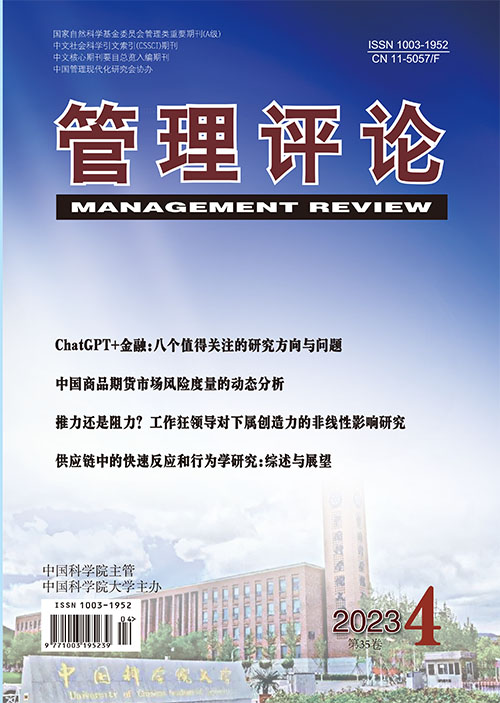|
|
Leader Change, Subordinate Management Team Restructuring and Innovation Efficiency
Yan Huanmin, Wang Zijia, Li Yaoyao
2023, 35 (4):
238-250.
Under the mode of Chinese enterprise governance, the change of leader is one of the important events of enterprises as it will directly affect the business strategy and organizational performance. Based on the perspective of organizational human capital structure, using the data of China’s A-share listed companies, this paper examines whether the change of leader will lead to the linkage effect of subordinate management team and its impact on innovation efficiency. The results are as follows. (1) On the whole, through the path of top-down “push forward” and the bottom-up “push back”, leader change will cause significant personnel adjustment of subordinate management team, and the management team structure will have obvious linkage “restructuring” effect. (2) Further, in the case of enterprise leader change, the more significantly subordinate management team is restructured, the stronger inhibiting effect will occur in enterprise’s innovation efficiency, as manifested in the reduction of R&D and the number of patents. After considering a series of robustness tests, such as leader definition, management personnel system, innovation output quality, eliminating alternative interpretation and alleviating endogenous problems, the conclusion still holds. (3) In further analysis, considering the departure expected of existing leader, the source type of succeeding leader and human capital structure of subordinate management, it is found that the less expected the existing leader is to leave, the less likely the succeeding leader will get promoted internally and the more dificient human capital reserve the subordinate management team has, the stronger inhibiting effect on enterprise innovation will be caused by the subordinate management team restructuring that arisies from leader change. In conclusion, based on the new perspective of the linkage effect between the “leader” change and the subordinate management team reconstruction, this paper expands the theoretical research on the economic consequences caused by the management change, and then provides scientific basis and enlightenment for perfecting the internal governance and innovative development of the management team.
References |
Related Articles |
Metrics
|

